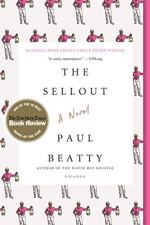|
This section contains 687 words (approx. 2 pages at 400 words per page) |

|
Point of View
Paul Beatty tells his narrative The Sellout using the reflective, stream-of-consciousness model. The first person point of view is that of the unnamed narrator, who is also the principal protagonist. The prologue of the novel and the final chapters are told in present tense by the narrator both before and after the Supreme Court case. The majority of the novel itself is told in a reflective past-tense, as the narrator is relating all of the events he is reciting years later to the Supreme Court Justices. The narrator makes frequent asides to contextualize or further explain certain things to the Court. For example, in Chapter 6, the narrator complains about the difficulties of having to deal with Hominy as a slave, and also notes that he tried multiple times to talk Hominy out of the desire to act as a slave. Many of these events in...
|
This section contains 687 words (approx. 2 pages at 400 words per page) |

|




